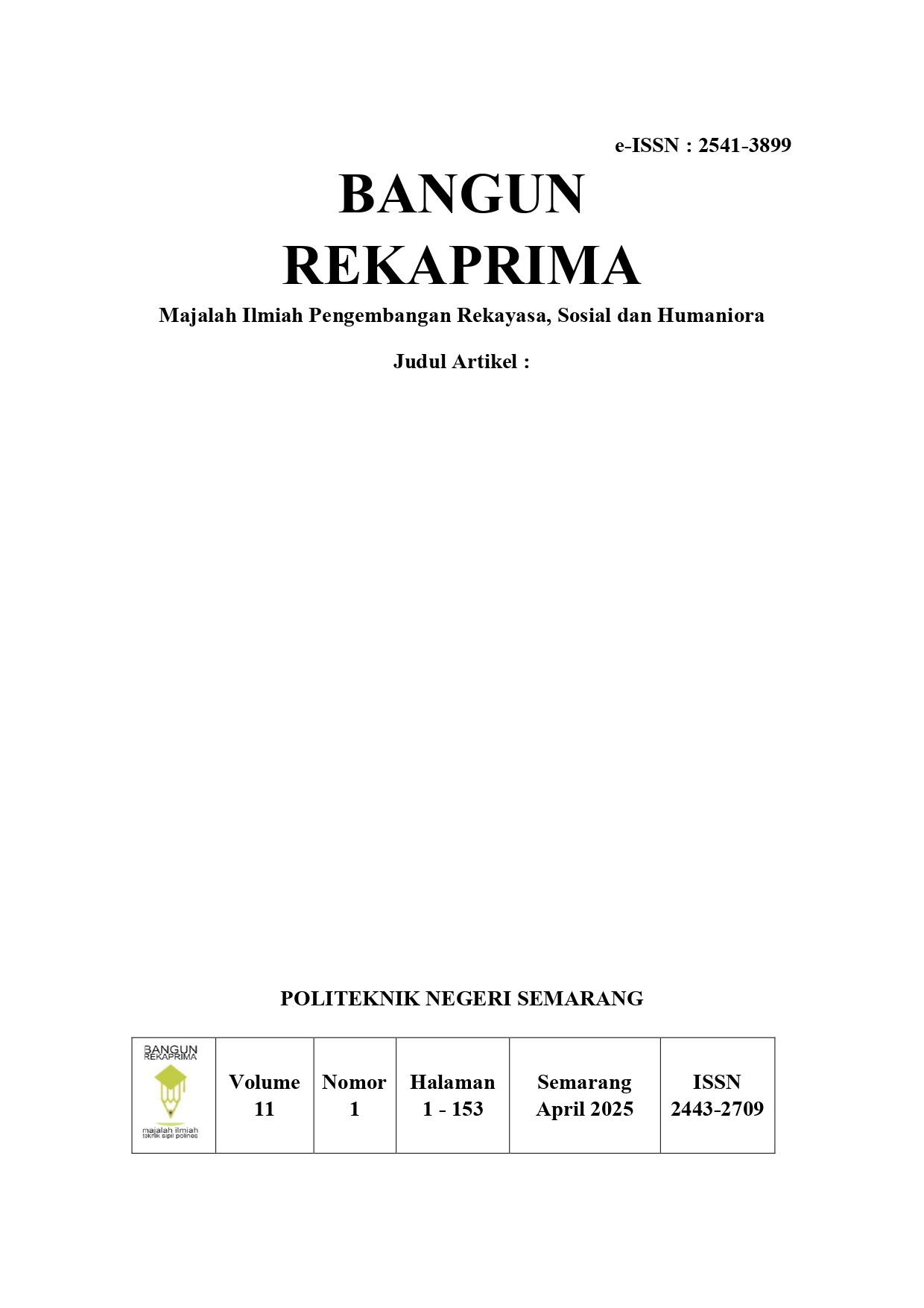STUDI EKSPERIMEN KUAT LEKAT LEM PADA PASANGAN BETON RINGAN
STUDI EKSPERIMEN KUAT LEKAT LEM PADA PASANGAN BETON RINGAN
DOI:
https://doi.org/10.32497/bangunrekaprima.v11i1.6799Abstract
In modern construction, lightweight bricks are increasingly used as an alternative building material due to their advantages in terms of light weight, ease of installation, and energy efficiency. However, the strength of structures formed from lightweight brick masonry is highly dependent on the quality of the bond between the elements, particularly the use of adhesives such as construction glue. One crucial factor determining the bond strength is the configuration and length of the bonding surface used. This study aims to evaluate the effect of the number of bonding rows on the adhesive bond strength of lightweight brick masonry. Testing was conducted experimentally using one- and two-row bonding configurations. Each sample was subjected to compressive force through a 24.4 mm diameter cylindrical press. Results showed that the two-row configuration produced a higher bond strength, but with a larger coefficient of variation, indicating lower stability of the results. Increasing the bond length actually tended to decrease the bond strength, likely due to uneven distribution of glue and pressure. Furthermore, all test specimens fractured in the brick body, not at the bonding surface, indicating that the adhesive strength had exceeded the tensile strength of the lightweight brick. Regression analysis showed a very strong relationship between compressive force and bond strength, indicating that applied pressure was the dominant factor in bond effectiveness.
References
Creswell, J. W., & Creswell, J. D. (2018). Research Design: Qualitative, Quantitative, and Mixed Methods Approaches (5th ed.). SAGE Publications.
Khalaf M. Fouad (2005). New Test for Determination of Masonry Tensile Bond Strength. DOI: 10.1061/ASCE08991561200517:6725
Nour, M., Mohamed, A., & Elyamany, H. (2022). Bond strength evaluation of AAC masonry walls using different thin-bed adhesives. Case Studies in Construction Materials, 17, e01456. https://doi.org/10.1016/j.cscm.2022.e01456
Wang, L., Yang, J., & Li, X. (2021). Mechanical performance and thermal conductivity of improved AAC blocks for sustainable buildings. Construction and Building Materials, 277, 122262. https://doi.org/10.1016/j.conbuildmat.2021.122262
Zhang, Y., Chen, M., & Li, Q. (2020). Experimental investigation on bond strength between autoclaved aerated concrete and mortar adhesives. Journal of Building Engineering, 32, 101786. https://doi.org/10.1016/j.jobe.2020.101786
Downloads
Published
Issue
Section
License

This work is licensed under a Creative Commons Attribution 4.0 International License.
The copyright of the received article shall be assigned to the journal as the publisher of the journal. The intended copyright includes the right to publish the article in various forms (including reprints). The journal maintains the publishing rights to the published articles.

This work is licensed under a Creative Commons Attribution 4.0 International License.






